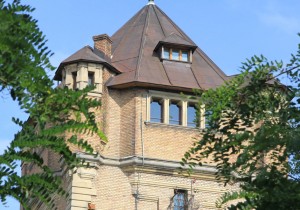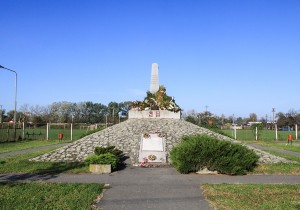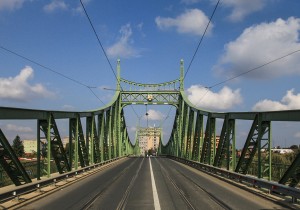The Fortress of Arad is one of the most important historical monuments existing in the western part of the country. It was built in the second half of the 18th century, 1763-1783, during the reign of Austrian empress, Maria Theresa.
History
During the years 1763-1783, one of the most modern fortifications at that time, from the eastern part of the Habsburg Empire, was built in Arad. The fortress was functional as a strategically important southern-defence line of the Kingdom, until the abolishment of the austro-hungarian monarchy (1918). The new fortress of Arad, in accordance with the plans of the empire, had to replace the medieval citadel of Arad and meet the requirements of contemporary military technology. In November 1918, the city was occupied by French and Serbian troops and in July 1919, it was once again taken over by the Romanian Army.
After the end of World War I, the fortress of Arad, as well as the whole city, became part of the vast movement for the achievement of the National Unitary Romanian State. Inside the fortress, the Military Council, National Guards and the Romanian National Council were constituted. On the 10th of June 1919, the first Romanian military unit - The regiment of “6 Vânători” - enters the establishment.
Currently, the military garrison stationed inside the fortress of Arad consists of a Romanian-Hungarian joint battalion for peacekeeping operations. It became operational in 1999 and continues to be so, today.
The Franciscan church inside the fortress of Arad was built by the franciscan monks of the order of “Saint Francis d’Assisi “, in 1705. Subsequently, the fortress was built around the Church. The last four monks who were dedicated to “Saint John of Capistrano” lived inside the monastery until 1861, when the church was transformed into a military hospital.
Architecture
The construction of the Fortress, work of architect Harsch, began in the summer of 1763, according to the guidelines of Vauban style, in the shape of a double star with 6 corners, with strong defensive walls, pillboxes and other military constructions. The walls of the fortress, built of brick and filled with earth, are placed on three rows. The walls are around 3 metres thick. At that time, the walls were surrounded by a moat filled with water from the river Mureș, bordered outwardly by a small wave of earth. In this type of fortification, the angles of the walls are constructed in such a way that howitzer-shells can be diverted by ricochet. Also, the earth filling softens the force of explosions.
It is notable that, historically, the style of Vauban has also left traces in other important cities of Romania, namely: Alba-Iulia, Oradea and Timișoara. However, of all the Romanian Vauban-fortresses, the citadel of Arad is the best preserved. Sébastien Le Prestre de Vauban (1633-1707) is the the main founder of the Vauban architectural concept. He was a military engineer of King Louis XIV of Vauban and the one who founded the modern concept of fortress-shaped bastion, a stellar defensive system that changed the military fate of Europe.
The circumference of the fortress walls measures 3.180 metres and they are provided with knight-type bastions, flanked by pentagonal redoubts. Overall, the bastions comprised 296 fire vents. Beyond the military and strategic aspect, the fortress of Arad involves a significant architectural value.
The main entrance gate, along with the buildings inside the fortress were made in Baroque style, with strong Viennese influences. The strength of the fortress, fin the inside, consists in the system of 334 blockhouses arranged strategically in panels and bastions on the corner of the walls. Under normal conditions, these blockhouses could accommodate 2940 troops, and in special cases, about 4030. The complex structure of the fortress, with numerous blockhouses, offered the possibility of prolonged resistance. Therefore, Austrian strategists considered the fortress of Arad to be one of the most powerful in the Empire.
Interesting facts
The fortress of Arad received its funding from Empress Maria-Theresa and was built by using the best-kept methods of the most renowned military engineers of the century. Although the Habsburg Empire was whirling in an unprecedented economic crisis, the Empress Maria-Theresa was investing masively in the Transylvanian infrastructure.
The recent history reminds us of an unusual event, that has a strong link with the existence of this fortress. During the great tribulation of the years of 1914-1918, the Commander in Chief of the Austro-Hungarian army settled a concentration camp in the fortress, where thousands Serbians from territories invaded by the Central Powers forces were brought.
In the outer perimeter of the fortress, there was a camp where Austro-Hungarians troops housed prisoners from the territories of Bosnia and Herzegovina, including the controversial nationalist, Gavrilo Princip, who assassinated the heir to the Austro-Hungarian throne, the Archduke Franz Ferdinand, on 28 June 1914, in Sarajevo. Basically, this assassination is considered to have caused the outbreak of World War I. According to the local historiography, due to the poor conditions of detention, 4317 prisoners, mostly Serbs, died in this fortress.
Similar tourist attractions
The Water Tower, in the past, was supplying water for the city and also was signalising fires. Today, it is declared a mini-museum of water, which hosts themed exhibitions.
The monument symbolically marks the place where the 13 officers of the Hungarian army were killed during the war of 1848, seen as the war of liberation from the Habsburg Empire.
Arad's Trajan Bridge crosses the river Mureş, connecting the traffic axes for both cars and trams, between the city centre and Aradul Nou.





